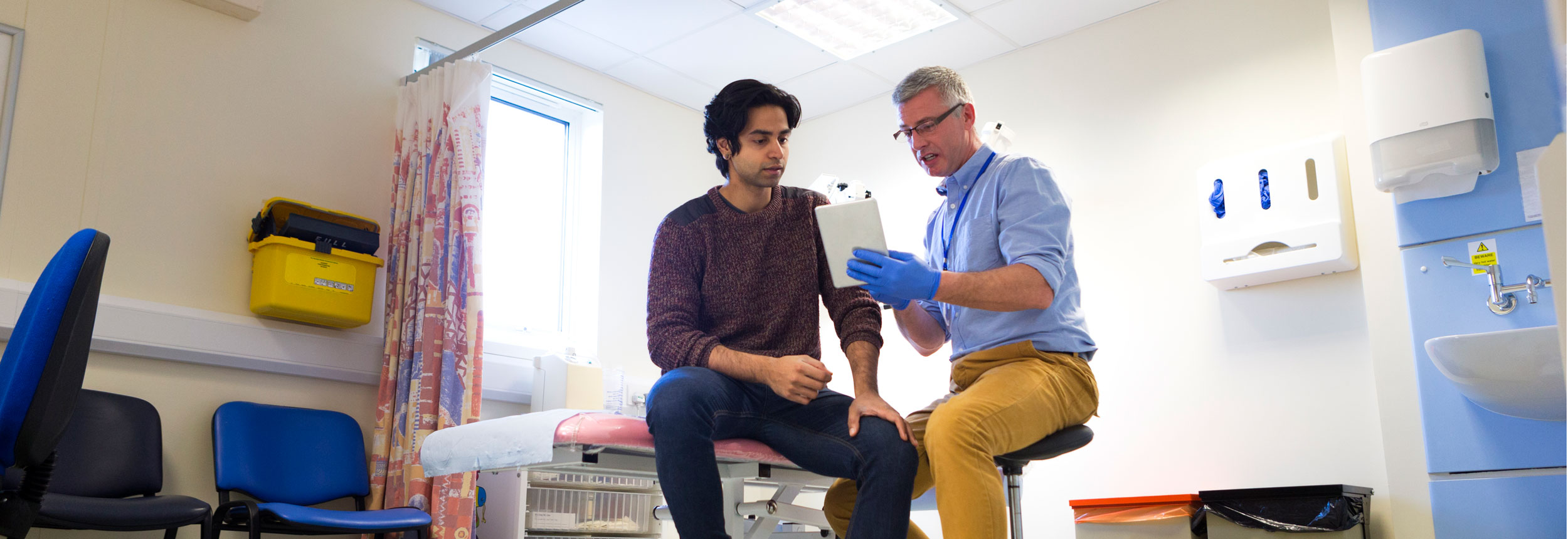Talking Points: Preparing for a Provider Visit

It is important to honestly and openly share your experiences with chronic pain with your provider(s). Don’t worry so much about how the provider will respond. Pain is a very common problem, and more and more providers have been trained to be respectful and respond in appropriate ways to a person’s experience of chronic pain, with the goal of working together to develop a treatment plan. You’ll want to be prepared for a series of questions that providers are likely to ask. Think about the following items, and perhaps take notes about your pain experience for a few weeks prior to the appointment.
Where is the pain located?
This is not always an easy thing for people to pinpoint as sometimes it spreads; however, being able to note, as well as you can, the area(s) of your pain is important.
What words or adjectives do you use to describe your pain?
Is it burning, searing, tingling, sharp, achy, or sore? People use a wide range of words to describe pain, and it is important to zero in on what words best describe your pain, since it is so individualized and the words you use can have diagnostic significance for your provider. For instance, musculoskeletal pain is often described with words such as “aching” or “sore,” whereas words like “shooting,” “tingling,” or “burning” are more characteristic of nerve involvement in the pain.
How severe is the pain and are there times when it is worse or better?
Providers will likely ask about the severity of pain you experience and typically use a 0 to 10 rating scale, 0 being no pain, and 10 being the worst pain imaginable. Since pain is subjective, some reject this scale, but by using the same measure every time you see your provider, you can monitor changes over time, which allows you both to evaluate the effectiveness of the treatment plan, or the lack of effectiveness, and make further decisions about your pain management strategies.
What factors seem to make the pain better or worse?
If you can articulate any activities that exacerbate the pain, or ones that seem to reduce it, these notes can help guide the discussion between you and your provider about options that you might choose in order to minimize your experience of pain, while still aiming to maintain a high level of function.
Are there any factors that have changed recently in your life?
Have you recently had a career shift, loss of job, or retirement? Have your living arrangements or relationship(s) changed? Have you experienced any other kind of loss? How are you eating? All of these changes can influence our moods, social engagement, activity levels, time and how we feel about ourselves, which can play a role in our experience of pain.
How do you manage with daily activities, work, and other important pursuits?
A plan should address daily duties and interests so it can help you find the best strategies for optimizing your level of functioning and your engagement with work and hobbies while also trying to optimally manage your experience of pain.
What providers or practitioners are you already seeing for pain management approaches?
Be sure that your primary care provider or other healthcare professionals are aware of one another and any other approaches that you’re trying so that they can be thinking about how they might best fit into your integrated pain treatment plan. Include over-the-counter medications, lifestyle changes, and whatever practices or techniques you are using, even yoga, meditation, and massage.
What goals do you want to accomplish, in spite of pain?
Goals can often be very helpful in the success of a pain management plan. Often setting small goals each week, or even each day, can lead to behavior changes and the addition of activities that can add to your quality of life and reduce your experience of pain.
